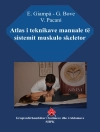Adolescence is a pivotal period of development with respect to health and illness. It is during adolescence that many positive health behaviors are consolidated and important health risk behaviors are first evident; thus, adolescence is a logical time period for primary prevention. In addition, the predominant causes of morbidity and mortality in adolescence are quite different from those of adults, indicating that early identification and treatment of adolescent health problems must be directed to a unique set of targets in this age group. Moreover, because of the particular developmental issues that characterize adolescence, intervention efforts designed for adults are often inappropriate or ineffective in an adolescent population. Even when chronic illnesses are congenital or begin in childhood, the manner in which the transition from childhood to adolescence to young adulthood is negotiated has important implications for disease outcomes throughout the remainder of the person’s life span. Organized in five major sections (General Issues, Developmental Issues, Treatment and Training, Mental Health, and Physical Health) and 44 chapters, Handbook of Adolescent Health Psychology addresses the common and not so common health issues that tend to affect adolescents. Coverage includes: ▪ Context and perspectives in adolescent health psychology ▪ Health literacy, health maintenance, and disease prevention in adolescence ▪ Physical disorders such as asthma, obesity, physical injury, and chronic pain ▪ Psychological disorders such as substance abuse, attention deficit hyperactivity disorder, depression, and eating disorders ▪ Congenital chronic diseases such as type 1 diabetes and spina bifida Handbook of Adolescent Health Psychology is the definitive reference for pediatricians, family physicians, health psychologists, clinical social workers, rehabilitation specialists, and all practitioners and researchers working with adolescents.
สารบัญ
Context and perspectives in adolescent health psychology.- A biopsychosocial perspective on adolescent health and disease.- Issues of diversity in adolescent health psychology: exploring sociocultural influences on adolescent health.- Socioeconomic influences on health and health behavior in adolescents.- Public health approaches to adolescent health beyond disease and illness.- Epidemiology of adolescent health.- Disease prevention in adolescence.- Determinants of health-related behaviors in adolescence.- Psychosocial stress, emotion regulation, and resilience in adolescents.- Mental literacy, mental health, and adolescents.- Advances in measurements and utilization of health-related quality of life instruments.- The Effects of physical activity on the physical and psychological health of adolescents.- Adolescent sexual assault: prevalence, risk associates, outcomes, and intervention.- Intimate partner violence in adolescent romantic relationships.- Continuity of behavior and parenting from childhood through adolescence.- School performance.- Brain development and health implications in adolescents.- Puberty: its role in adolescent maturation.- Adolescent sexuality and sexual behavior.- Intervention effectiveness research in adolescent health psychology: Methodological issues and strategies.- Training issues in adolescent health.- Reforming the behavioral health delivery system for adolescents: why is it needed and what is psychology’s role?.- Confidentiality and care of the adolescent patient.- Treatment adherence in adolescents.- Smoking in adolescents.- Adolescent substance abuse.- Attention deficit/hyperactivity disorder in adolescence.- Social and biological changes during adolescence that precipitate the onset of antisocial behavior.- Personality disorders in adolescence.- Deliberate self-harm in adolescents.- Eating disorders in adolescents.- Anxiety in adolescents.- Depression and suicide-related behavior in adolescence.- Adolescents with intellectual disabilities.- Pregnancy in adolescents.- Sexually transmitted infections (STIs) and the developing adolescent: influences of and strategies to reduce STI acquisition.- HIV among adolescents in the United States.- Obesity in adolescents.- Cardiovascular complaints in adolescence: clinical considerations.- Asthma in adolescents.- Endocrine disorders in adolescents.- Musculoskeletal injuries in adolescents: a sports medicine model.- Headaches in adolescents.- Chronic pain in adolescents: physiological and psychological bases for pain.
เกี่ยวกับผู้แต่ง
William T. O’Donohue, Ph.D. is Professor in the Department of Psychology and Adjunct Professor in the Department of Psychiatry at the University of Nevada, Reno. From 1999 through 2005 he was Nicholas Cummings Professor of Organized Behavioral Healthcare Delivery at the same institution. In addition, he is Director of the Victims of Crimes Treatment Center and the Sexual Assault Prevention and Counseling Services at University of Nevada, Reno. He is a member of the Association for the Advancement of Behavior Therapy and since 1999 has served on the Advisory Board of the Cambridge Center for Behavioral Studies. His areas of specialization are mental health service delivery, forensic psychology, human sexuality (treatment of victims and offenders), management and administration, behavior therapy, and philosophy of psychology. Lorraine Benuto, Ph.D. is program coordinator and therapist for the Victims of Crime Treatment Center in the Department of Psychology at University of Nevada-Reno. She does extensive public speaking on the violent crime, sexual assault, and post-traumatic stress disorder. Lauren Woodward Tolle, M.A. will complete her doctoral internship in clinical psychology at the University of Nevada-Reno in July 2010. She is currently affiliated with the Department of Psychiatry at the University of Colorado, Denver. She received a masters degree in applied health psychology in 2004 and a masters degree in clinical psychology in 2008.












